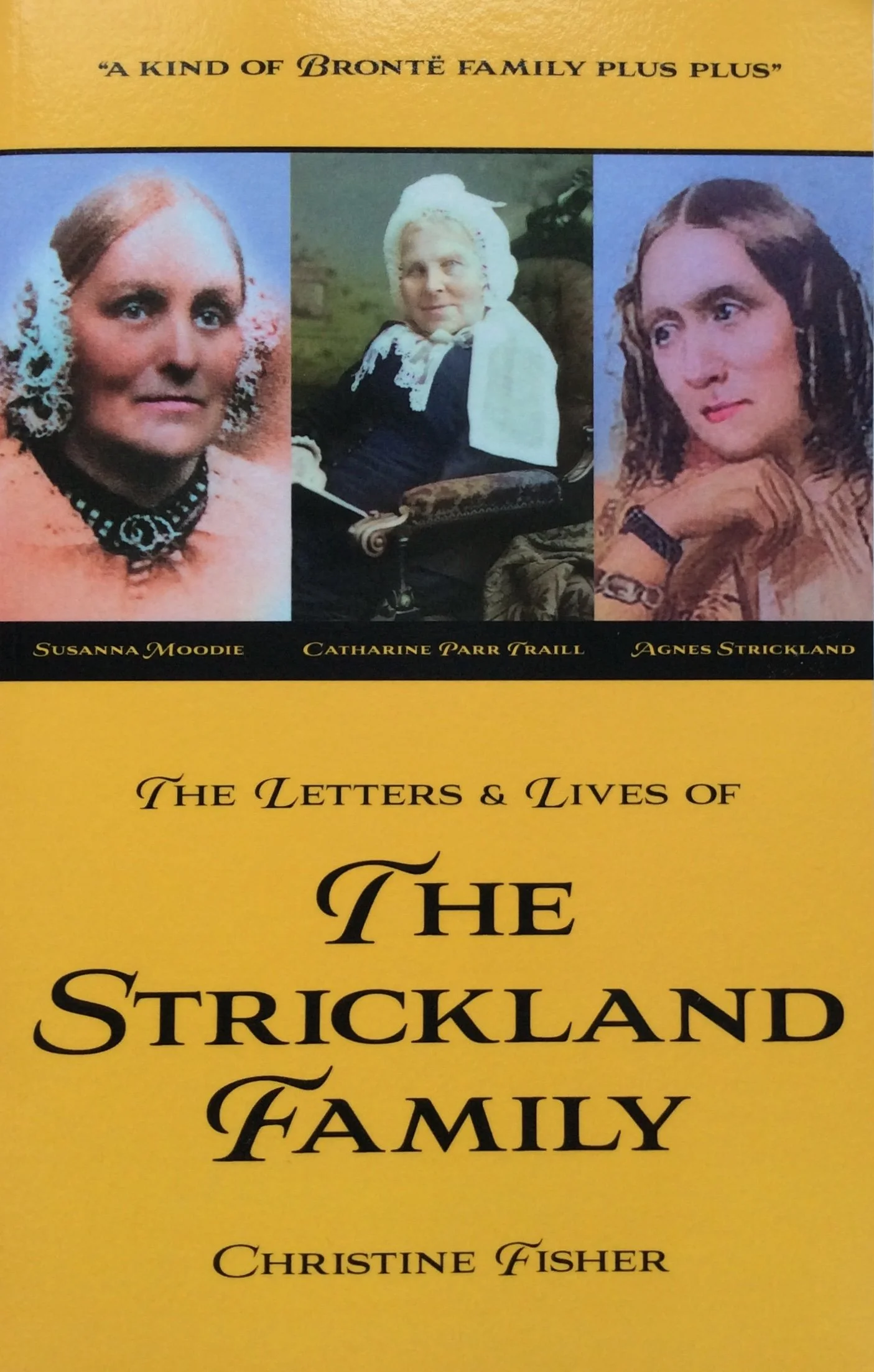website slowly developing; latest update 9th December 2025
This Strickland family had literary talents to outshine the Bronte family - and much more besides. Their letters, journals and writing combine to give a fascinating insight into life in 19th century Canada and England.
paperback ISBN 978-1-83975-157-8 eBook ISBN 978-1-80381-155-0. preview available on Amazon; paperback can be ordered at any bookshop
Agnes Strickland (1796-1874). “Lives of the Queens of England” introduced a new type of history book. Enjoyable to read as well as factually correct. Agnes was an international celebrity who succeeded in keeping secret that her sister Elizabeth Strickland (1794-1875) was often her co-writer but insisted on anonymity. They both were born, lived and died in England with no descendants.
Susanna Moodie (1803-1885) Poet and novelist, her “Roughing It In the Bush” continues to be a classic. It gives a dramatised version of early pioneer life in Canada. She emigrated from England in 1832, had 7 children and at least 37 grandchildren. Her daughter Agnes Fitzgibbon Chamberlin collaborated with Catharine Parr Traill. Three of her grand-daughters spent time in England with their great-aunt Sarah Strickland Gwillym.
Catharine Parr Traill (1802-1899) combined writing for children with serious botanical works such as “Studies of Plant Life in Canada”. Like Susanna she emigrated to Canada from England in 1832. She had 9 children and at least 31 grandchildren. She needed the help of her sisters Agnes, Jane Margaret and Sarah and her brother Sam for financial and other practical support throughout their lives. ‘Traill College’ in a Canadian university is named after her.
Sam Strickland (1805-1867) emigrated to Canada aged 19. He carved out his farm from dense forest; became a prosperous businessman and farmer. He had 15 children, mainly sons, and at least 67 grandchildren. He wrot an account of the first 27 years of his life in Canada. He is commemorated in Lakefield, Ontario together with his sisters Catharine Parr Traill and Susanna Moodie.
Jane Margaret Strickland (1800-1888) poor health and caring for their aging mother restricted her life. She earned a living in various ways - editing Christmas Annuals, proof-reading for her sisters, plus writing a detailed history of Rome, a romantic novel and a biography of Agnes Strickland. Lived most of her life in Suffolk, England.
Sarah Strickland Gwillym (1798-1890) was the beauty of the family. She married and was widowed twice. Her face is familiar to many Canadians because a portrait of her when young was thought to be a portrait of Catharine. Sarah gave financial support to other members of her family, especially to Catharine. She lived and died in England and had no children.
Captain Tom Strickland (1807-1874) joined the merchant navy aged 14. He became a Master Mariner and travelled the world. His wife travelled with him for many years and several of his children were born at sea. His children and grandchildren settled variously in Canada and in England, possibly also in Australia and Peru. When not at sea, he lived in England.
